Commercial Passenger Lifts: Unveiling the Best of the Best!
Discover top-notch commercial passenger lifts in this comprehensive guide. Explore the best options for your business needs. Elevate efficiency now!

Muneer Ahammed | Updated on September 22, 2023
A Commercial Passenger Lift is an essential element of any modern commercial building. This vertical transportation system is designed to provide safe, convenient, and efficient access to all floors of a building for passengers.
In this guide, we will explore the definition, purpose, and benefits of its, as well as different types and components, pricing, manufacturers, and maintenance.
What is a Commercial Passenger Lift?
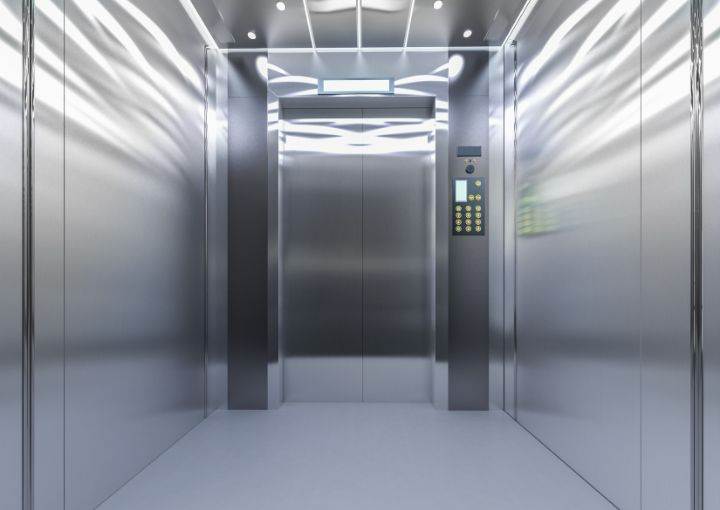
A Commercial Passenger elevator is a type of elevator that is specifically designed for commercial buildings. It is used to transport passengers from one floor to another within a building.
This Lift is larger, more robust, and designed to meet the higher demands of commercial buildings, compared to residential lifts
Benefits of Using a Commercial Passenger Lift
●Improved Accessibility: One of the primary benefits of using a Commercial Passenger elevator is improved accessibility. It enables passengers to easily access all floors of a building, making it ideal for multi-story buildings.
●Increased Safety and Convenience: It is designed to meet strict passenger lift regulations for safety and comes with a range of features, such as emergency brakes, automatic doors, and intercom systems, to ensure the highest level of safety and convenience.
● Increased Efficiency: Commercial Passenger elevators can also increase efficiency by reducing the time and effort required to access different floors of a building.
Different Types of Commercial Passenger Lifts
Types of Commercial Passenger Lifts:
1. Hydraulic Lifts:
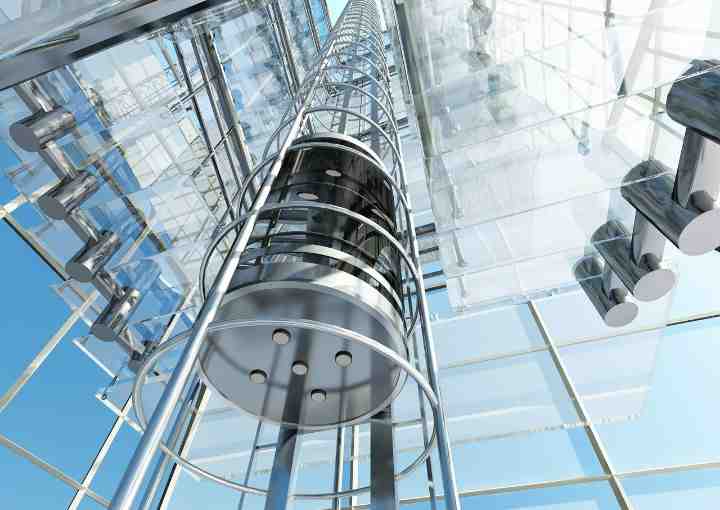
- Pros:
- Low cost of installation
- Smooth operation
- Cons:
- Limited travel distance
- Higher maintenance costs
- Slower speed of operation
- Best suited for:
- Low-rise buildings (up to 5 floors)
- Residential buildings
2. Traction Lifts:
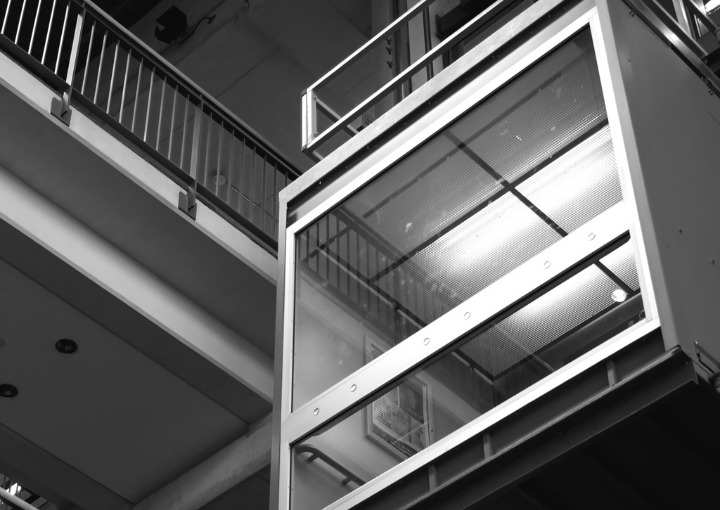
- Pros:
- Higher travel distance
- Faster operation
- Better stability
- Cons:
- Higher installation cost
- Complex maintenance
- Best suited for:
- Taller buildings (more than 5 floors)
- Commercial and public buildings
3. Screw-driven Lifts:
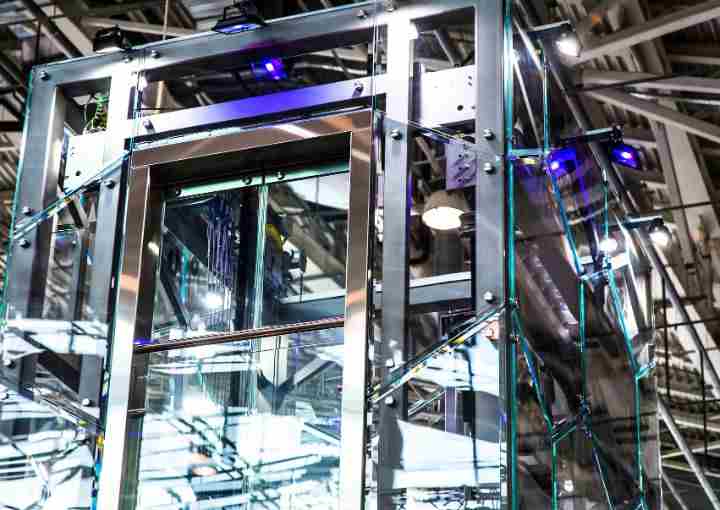
- Pros:
- High reliability
- Energy efficient
- Low noise operation
- Cons:
- Limited speed
- Higher maintenance costs
- Best suited for:
- Industrial and heavy-duty applications
- Buildings with limited space
4. Roped Hydraulic Lifts:
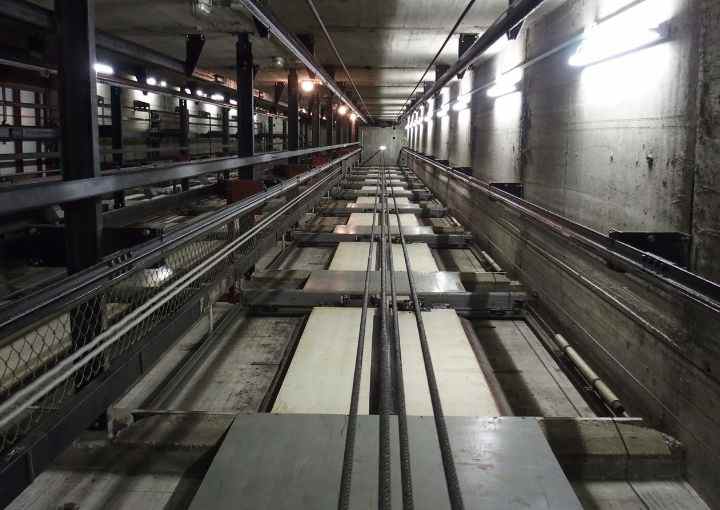
- Pros:
- High load capacity
- Energy efficient
- Flexible design options
- Cons:
- Limited travel distance
- Higher maintenance costs
- Best suited for:
- Medium-rise buildings (5-10 floors)
- Residential and commercial buildings
5. Pneumatic Vacuum Lifts:
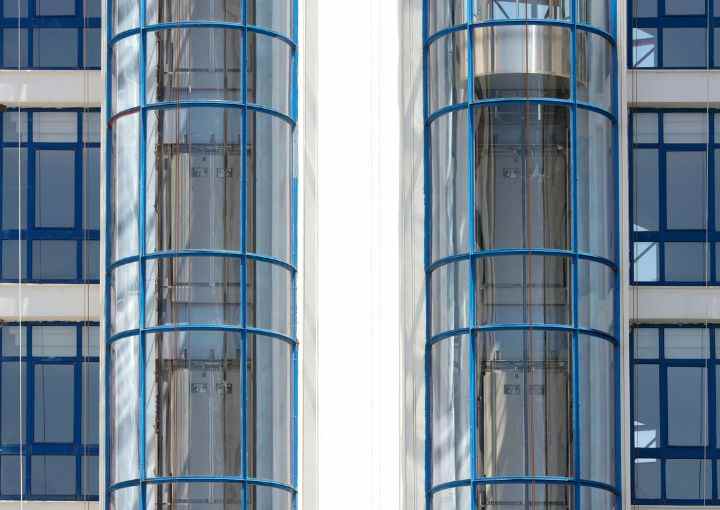
- Pros:
- Space-saving design
- Energy efficient
- Smooth operation
- Cons:
- Limited load capacity
- Higher maintenance costs
- Best suited for:
- Low-rise buildings
- Modern and eco-friendly buildings
Some other types of commercial passenger lift
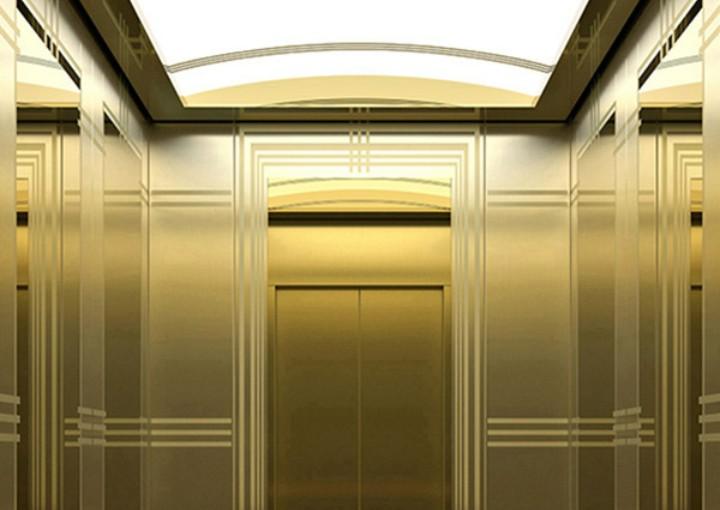
Machine-roomless: Commercial MRL Passenger Lifts are compact and require less space than traditional elevators. They are ideal for buildings with limited space for a machine room.
MRL Elevators: MRL (Machine Room Less) elevators are a type of machine-roomless elevator that uses new technology to minimize the need for a machine room.
Small Passenger Lift: A small passenger lift is a type of lift that is designed to transport a limited number of people in a small and compact space. These lifts are typically found in residential buildings, small offices, and retail spaces where space is limited.
Goods Passenger Lift: A goods passenger lift is a type of lift that is designed to transport both people and goods, such as packages, furniture, and equipment. These lifts are typically found in commercial buildings, warehouses, and distribution centers, where the efficient movement of people and goods is critical.
Construction Passenger Lift: A construction passenger lift is a type of lift that is specifically designed for use in construction sites. These lifts are typically larger and more robust than other passenger lifts, as they need to withstand the rigors of a construction environment.
To know more about passenger lift details
Advantages and disadvantages of different types of commercial passenger elevators:
Hydraulic Lift:
Advantages:
- Smooth operation
- Can lift heavy loads
- Low noise levels
Disadvantages:
- Require a large machine room
- Limited travel height
- Costly to maintain
Traction Lift:
Advantages:
- Higher travel height
- More energy efficient
- Can be fitted in smaller spaces
Disadvantages:
- Slower speed than hydraulic lifts
- More complex design
- Costly to install
Machine Room Less (MRL) Lift:
Advantages:
- Space-saving design
- No need for a chine room
- Low maintenance cost
Disadvantages:
- Limited travel height
- Higher noise levels
- More expensive than hydraulic lifts
Latest trends and innovations in the commercial passenger lift industry:
●Energy-efficient lifts: Eco-friendly and energy-saving lifts are becoming increasingly popular, reducing the carbon footprint of buildings.
●Intelligent lifts: Lifts equipped with advanced technologies such as sensors, real-time monitoring, and predictive maintenance systems are becoming more common.
● Accessibility features: Lifts with accessibility features such as voice-activated controls, low-floor access, and wider doors are becoming more popular to accommodate people with disabilities.
● Smart Home Integration:Lifts that can be integrated with smart home systems to allow control from a smartphone or tablet are becoming more common.
Safety and security features of commercial passenger lifts:
- Overload protection: Lifts are equipped with sensors that detect overloading and prevent the lift from moving.
- Emergency stop button: A button that stops the lift in the event of an emergency.
- Emergency lighting: Lights that automatically turn on in the event of a power failure.
- Intercom system: Allows communication between the lift and the ground floor.
- Firefighters’ operation: A special switch for use by firefighters to allow them to access all floors of a building in an emergency.
Factors to Consider When Choosing a Commercial Passenger Lift
1. Budget:
It’s important to have a clear understanding of your budget before choosing a commercial passenger lift. This will help you determine what type of lift is feasible for your project and avoid overspending. Consider factors such as the cost of the lift, installation, and ongoing maintenance when determining your budget.
2. Building Codes and Regulations:
Ensure that the commercial passenger lift you choose meets all relevant building codes and regulations. This includes local, state, and federal laws and regulations, as well as any industry-specific requirements.
3. Capacity:
Determine the lift’s maximum load capacity and ensure it can accommodate the expected number of passengers and their belongings. Consider the size and weight of wheelchairs, mobility scooters, and other assistive devices when making this determination.
4. Floor-to-Floor Heights:
Consider the distance between the floor levels that the lift will be serving. Make sure the lift can reach all required levels and has enough headroom for passengers to safely enter and exit the lift.
5. Type of Lift:
There are several types of commercial lifts to choose from, including hydraulic lift, traction, and pneumatic lifts. Consider the specific needs of your project when choosing a type of lift.
6. Power Source:
Consider the power source for the lift. Most commercial passenger lifts are powered by electricity, but hydraulic lifts may require a dedicated hydraulic power supply.
7. Safety Features:
Safety is a key consideration when choosing a commercial passenger lift. Ensure that the lift has the necessary safety features such as emergency brakes, alarms, and backup power supplies.
8. Maintenance Requirements:
Consider the ongoing maintenance requirements for the lift. Choose a lift with low maintenance needs and ensure that spare parts and technical support are readily available.
9. Design:
Consider the design of the lift, including the interior and exterior finishes, lighting, and ventilation. Ensure that the lift matches the design of the building and meets the aesthetic needs of the passengers.
10. Brand Reputation:
Consider the reputation of the manufacturer and the lift brand. Choose a lift from a reputable and experienced manufacturer with a proven track record of providing high-quality and reliable products.
Different Components of a Commercial Passenger Elevator
Passenger lifts play an essential role in modern buildings, providing safe and efficient vertical transportation. If you’re planning a construction project that requires a passenger lift, it’s essential to understand its various components and how they work together to ensure safe and smooth operation.
Car
The car is the lift cabin or platform where passengers stand and ride. It’s typically the most visible component of a passenger lift, and it’s essential to choose the right size, style, and finish to match the look and feel of your building. The car is usually suspended from a system of ropes or cables and travels along guide rails to reach different levels of the building.
Machine Room
The machine room is the location of the lift’s motor, control panels, and electrical equipment. This room is usually located on the roof or at the top of the building and houses the lift’s machinery and control systems. The machine room is usually accessible for maintenance and repair purposes, and it’s essential to choose a passenger lift that has a compact and efficient machine room design to minimize the space required.
Control Panel
The control panel is the interface used to call, operate, and direct the lift. The control panel is usually located in the lift car and the lobby, and it includes buttons and displays to indicate the lift’s position, direction, and status. The control panel is also used to select the desired floor, open and close the doors, and activate emergency procedures.
Guide Rails
The guide rails are an essential component of a passenger lift, and they support the lift car and keep it on track as it travels up and down the building. The guide rails are usually made of steel or aluminum, and they run vertically along the sides of the lift shaft. The guide rails ensure that the lift car remains stable and travels smoothly, and they are crucial for the safety and performance of the lift.
Door System
The door system is the mechanism that opens and closes the lift doors, allowing passengers to enter and exit the car. The door system is usually made up of two or more doors, and it must be designed to meet safety standards, such as fire-resistant and automatic closing features. The door system must also be easy to operate, reliable, and durable, so passengers can safely and comfortably enter and exit the lift car.
Cost Determining Factors
A commercial passenger lift cost is determined by several factors, including size, number of stops, control panel type, speed, capacity, and special features.
Delving Deeper into Each Factor
Size: The size of the lift car and the lift shaft will impact the cost of the lift. The larger the lift car, the more expensive the lift will be.
Number of Stops: The more stops the lift has, the more expensive it will be. This is because each stop requires additional electrical, mechanical, and control systems.
Control Panel Type: The type of control panel used will impact the cost of the lift. Simple control panels are less expensive than advanced control panels with multiple functions and displays.
Speed: The speed of the lift will impact the cost. Faster lifts require more powerful motors and other components, which add to the cost.
Capacity: The capacity of the lift will impact the cost. Lifts with higher capacities require larger motors, guide rails, and control systems, which add to the cost.
Special Features: Special features, such as automatic leveling, energy-efficient systems, and fire-resistant features, will add to the cost of the lift.
When choosing a lift manufacturer, consider the following factors:
- Reputation: Look for a manufacturer with a proven track record of producing high-quality, reliable lifts. Check customer reviews, testimonials, and industry awards to get a better idea of a manufacturer’s reputation.
-
Quality: Make sure the manufacturer uses high-quality materials and components to produce their lifts. Look for a manufacturer that offers a warranty on their products, as this is a good indicator of their confidence in their products’ quality.
- Reliability: Choose a manufacturer that has a history of producing lifts that are reliable and durable. A reliable lift will provide years of safe and efficient service for your building and its occupants.
- Innovation: Consider a manufacturer that is constantly developing new technologies and features for their lifts. An innovative manufacturer will keep you ahead of the curve with the latest advances in lift technology.
- Technology: Look for a manufacturer that uses the latest technologies to produce their lifts. For example, energy-efficient systems, advanced control panels, and fire-resistant features are all important considerations.
Maintenance of Commercial Passenger Lifts
Regular maintenance is essential to ensure the safe and efficient operation of commercial passenger lifts
Maintenance Components
Commercial passenger lifts are complex systems that require regular maintenance to ensure their safe and efficient operation.
Lift components that require regular inspections, testing, and maintenance include doors, control panel, and machine room.
Regular maintenance of these components will ensure that the lift is operating correctly and that any potential problems are identified and addressed before they become serious.
Professional Maintenance
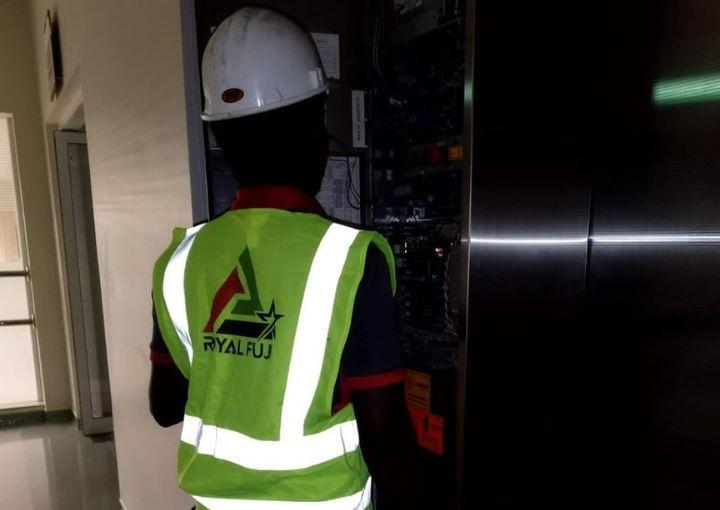
Working with a professional lift maintenance company is the best way to ensure that your lift is well-maintained and operating safely. Professionals have the expertise, experience, and equipment needed to keep your lift running smoothly.
They can perform regular inspections, testing, and maintenance to keep your lift in top condition, and they can also respond quickly to any problems that arise. By working with a professional lift maintenance company, you can rest assured that your lift is in good hands and that your building and its occupants are safe.
Royal Fuji is a professional passenger elevator company providing the best services in the market.
Common problems that can arise with commercial passenger lifts and how to address them:
- Power failure: Check the backup power supply and reset the lift’s control panel.
- Door malfunction: Check for any obstructions and reset the lift’s control panel.
- Slow or noisy operation: Check for any mechanical issues and have a maintenance professional examine the lift.
- Stuck between floors: Check for any mechanical issues and have a maintenance professional examine the lift. In the meantime, use the emergency intercom to call for help.
In summary, investing in a commercial passenger lift is a smart decision that will bring many benefits to your building and its occupants. With the right lift and proper maintenance, you can rest assured that your lift will serve you and your passengers for many years to come.
Royal Fuji is one of the best passenger lift suppliers in UAE with the best services and packages. We have been in the industry for about 15-plus years. With our expertise in the field and with a team of skilled professionals we work for customer satisfaction and we find success in the same also.
For any commercial lift, services don’t hesitate to contact us to get the best product in the market.
Frequently asked questions
1. What are the requirements for a commercial passenger lift?
The requirements for a commercial passenger lift can vary depending on the jurisdiction, but generally include standards for safety, accessibility, and performance.
2. How much does a commercial passenger lift cost?
The cost of a commercial passenger lift can vary greatly depending on factors such as size, speed, capacity, and features. It is best to consult with a vendor like us for a more accurate estimate. Contact Royal Fuji professionals for the best quote in the market.
3. What is the difference between a hydraulic lift and an electric lift?
Hydraulic lifts use hydraulic fluid to raise and lower the cab, while electric lifts use an electric motor to drive a gear system. Electric lifts are typically more energy-efficient and have a smoother ride, while hydraulic lifts are often less expensive and have a simpler design.
4. How much space is required for a commercial passenger lift?
The space required for a commercial passenger lift can vary depending on the size and type of lift but generally requires a shaft and machine room. For more detailed information, it is advisable to seek guidance from a vendor.
5. What is the maximum weight capacity of a commercial passenger lift?
The maximum weight capacity for a commercial passenger lift can vary greatly depending on the model but typically ranges from 1000 to 5000 pounds.

Muneer Ahammed
Sales & Operation Manager - Royal Fuji
Mr. Muneer Ahammed holds the position of Sales & Operation Manager at Royal Fuji and possesses 16 years of experience in the vertical transportation industry. For any inquiries related to Commercial passenger lifts, please do not hesitate to reach out to him.
